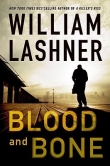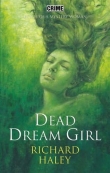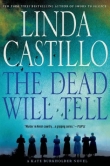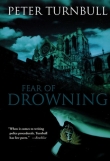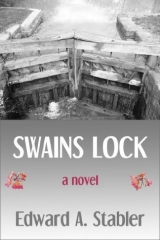
Текст книги "Swains Lock"
Автор книги: Edward A. Stabler
Жанры:
Триллеры
,сообщить о нарушении
Текущая страница: 9 (всего у книги 25 страниц)
Chapter 12
Falling
Tuesday, March 19, 1996
Vin walked past the Great Falls Visitor Center and onto the footbridge across the top of Lock 20. It was a cool and windswept morning, so today there was no ranger delivering a long-winded lecture on the workings of the canal. He stopped to study the reddish-brown stone blocks that formed the walls of the lock. Their faces were pockmarked and discolored by sediment and moss, but he saw no mason’s marks.
As he had learned from a trip to the Potomac library, some of the blocks used to construct the aqueducts, culverts, and locks on the canal had these marks etched into them. The marks were traditionally used by stonemasons to ensure they would be paid for the stones they had cut, and each mason carved a distinct symbol to designate his work. But since the masons hired to build the C&O in 1829 were paid monthly wages, rather than by the piece, there were few mason’s marks to be found on the structures of the canal. He crossed the footbridge to the towpath and turned downstream.
Locks 19 and 18 were just ahead, and he reflexively stopped to scan the lock walls as he passed them. No mason’s marks. The walkway out to Great Falls emerged to his right and he noticed that the tendon of river it spanned was brown and frothy, flying at the high level of spring. Past the walkway, Lock 17 lay in tatters, its downstream gates and swing beams gone. No marks here either. When the wooded slope to his right fell away into a cliff, he veered over to the wooden railing to look down. As he suspected, the cliff wasn’t natural; it was a man-made isthmus of stacked rocks that carried the canal and the towpath from the Maryland riverbank to Bear Island. So the isthmus had severed a finger of the river and annexed it to the canal. Across it the rocks and woods of Bear Island rose abruptly on his right.
He stopped to read a display sign that referred to two massive stone walls that squeezed the towpath and the canal just ahead.
Structures such as this stop-gate were designed to divert flood waters from the canal. Wooden planks were dropped into slots, forming a dam which diverted rushing waters along a stone levee and back into the Potomac.
He proceeded to the stop gate and scanned its ten-foot-thick walls for mason’s marks, finding none. Vertical slots as wide as his hand faced each other across the sliver of canal and towpath. The wall before him end-capped a levee of stone and earth that receded through the Bear Island woods toward the river. He walked back to the display sign. Below its text was a grainy photo of the Potomac during a massive flood. His eyes widened when he read the caption.
Flooding in 1924, at Six Locks near Great Falls.
Not far from where he was standing now. In the photo’s foreground, the river had risen dozens of feet to engulf the canal and the towpath just below a lock. Scattered tree-tops scarred the water halfway to the Virginia shore. If the photo was shot from the hillside above the Great Falls Tavern, those submerged trees might have sprung from Olmsted Island, and the lock might be Lock 17 or 18. Right now he stood below those locks on the towpath, or underwater during the flood of 1924. He read the remaining text in the corner of the sign:
Although this stop-gate was a local success, the canal as a whole suffered great damage from periodic floods which became more frequent and violent as land was cleared for farms and towns along the Upper Potomac. By World War I, traffic and revenues along the canal had dwindled to a point where it was touch-and-go to continue operations. After violent spring floods wrecked miles of canal and towpath in 1924, the “old ditch” was closed for good in all but the Georgetown area.
“A local success”. He tried to imagine the 1924 floodwaters coursing along several feet overhead and slamming into the stop-gate’s planks and stone walls, then draining across Bear Island, guided by the earth-and-rock levee that extended from those walls.
The trailhead for Section A of the Billy Goat Trail abutted the sign, and feeling he was unlikely to find Kelsey Ainge’s elusive mason’s mark along the heavily-trafficked towpath, Vin followed the trail toward the cliffs overlooking the Potomac’s Mather Gorge. The levee peeled away and dissolved into the woods as thin trees gripped patches of dirt between lichen-stained rocks. He crossed knee-deep fissures along the ridge and clambered over rounded rocks packed together like sea mammals on a beach, some the size of a walrus and some the size of a whale. He found himself searching for the next blue blaze, then deciding on the best rock-hopping sequence to reach it.
When the trail swung onto the highest rocks, he stopped to assess Mather Gorge. It was dead straight for over half a mile, with the cliffs on the Virginia shore mirroring those he presided over now, the two-hundred-foot-wide river running swift and deep between them. Turning through a panorama, he saw no one else along the trail or across the river. And no sign of human presence: no houses or buildings; no towers, wires, or roads; no boats. Just the mid-morning sun peeking through sliding clouds to illuminate the cliffs on the far side of the gorge. Nor any human sound – just the shrill moan of the northwest wind driving endlessly past his ears. This, he realized, was what the Algonquin saw five hundred years ago as they climbed down to fish. Today made timeless, in Kelsey Ainge’s words.
He sought out the next blue blaze. There were countless stone surfaces along the Billy Goat Trail, but none etched with mason’s marks. The photo he’d seen at Kelsey’s studio showed the mark on a stone block, but blocks served no purpose along this high route. The trail descended to cross a drainage that emptied into a small cove, then quickly climbed back up a wall of rocks on other side.
When the trail and the river began to curve out of Mather Gorge, he reached a sign post. Beside it was a spur trail through the woods that the sign said was a shortcut back to the towpath. Thinking the less-traveled paths held more promise, he followed the spur, which wound past boulders and a dark, translucent pool before meeting the towpath near the upper end of Widewater. Towering sycamores mocked him across the water from the Maryland berm. He turned left onto the towpath, looping back toward Great Falls.
What am I doing, he wondered? Circling time-worn paths along the river and the canal, searching for a mason’s mark and a trinity of sycamores. An old photo and a dried-out note were the two fragile threads tethering his search to the real world. “In your search for me you may find the truth.” Maybe the truth awaiting him had nothing to do with Lee Fisher’s fate, or with the money, the killers, or the dead. Maybe his vulnerability was the truth, and maybe Emmert Reed’s albino mule was really an albino whale. Yet he knew that walking away would extinguish a mystery and curl up a hidden dimension of the world.
The towpath crossed a bridge over a small cove that bit into Bear Island, its head sealed by a wall of mildewed, block-shaped stones. He stopped to look at the wall and wonder why it was there. If the ground behind it was higher than the water, the wall would serve no purpose. If it was lower, the wall would prevent the canal from draining into a depression on Bear Island. But the canal could easily fill a swampy depression and then recover its desired level; the wall still wouldn’t be needed.
Unless it was more than a depression behind the wall. Maybe it was a drainage. He remembered the drainage he’d just crossed on the Billy Goat Trail, shortly before climbing to the spur trail. Maybe the wall blocked a draw that ran all the way to the river. In that case it might be there to prevent the canal’s exsanguination. He crossed the remainder of the bridge and found an entry point into the woods.
Working a diagonal, he aimed for the opposite side of the stone wall. He ascended a mound through dry foliage and found an oblong pond on its far side. Just past the head of the pond to his left, the ground rose to the back side of the wall. To his right, the tail of the pond was obscured by scraggly trees where the shoulders of the drainage drew together. The gentle grade before him was covered with matted brown grass and the truncated spears of trees felled by beavers. But no water was flowing, so while beavers had been active here, the pond wasn’t their work. He circled toward the head of the pond and picked through a tangle of vines and branches.
The stone wall was about his own height, and he walked along it examining its stones. The faces were too flat and the edges too straight to be natural. Since there were no meaningful gaps between them, the stones must have been cut by masons to make the wall watertight. No marks were etched on their faces. The path to the far side of the pond was blocked by imposing boulders, so he retraced his steps across the grassy slope. The tail of the pond was bordered by a thicket of saplings sprouting from the steep banks on both sides. Broken shadows loomed inside the thicket, extending into the water and leaving only a slice of pond visible between them.
He followed the crest along the side of the pond and down past the thicket that held the shadowed forms. Their backs faced south and were brightly lit – two old stone walls, screened by the tangle of brush. Seven feet high with flat faces, straight edges, and a body-length gap between them. The walls merged with the shoulders of the drainage. He pursed his lips and whistled softly. It was a stop-gate.
Why here? He glanced at the tail of the pond, which meandered left around a bend with the drainage, and grasped the stop-gate’s purpose. Not to keep the canal’s water in, but to keep the river out. If this drainage led all the way to the river, then it was also a backdoor to Widewater during floods. A path for the river to reclaim its severed finger.
He picked his way along the bank toward the near wall and his eyes settled on a waist-high block on its right edge. Amidst white and green lichen, an eroded symbol was carved on its face. Kelsey Ainge’s mason’s mark! He felt compelled to touch it, but it was out over water of unknown depth. He pushed through saplings to the wall and found a foothold on its face. Cracks and bumps served as handholds, and he was able to edge out far enough to trace the mark's outline with his fingers.
Vines and moss were sprouting from cracks between the stones as the woods slowly engulfed the stop-gate. Looking across at the opposite wall, he saw two saplings growing in dirt that had accumulated on its scalp. His fingers stiffened, so he shifted back and dismounted from the wall. Retreating for a broader view, he noticed that the near wall was also lidded by a layer of dirt, moss, and dead vines. No trees, but three pale sticks visible through the vines. They were vertical and aligned, which seemed odd.
He climbed the slope and beat his way down through the thicket toward the top of the wall. The pale sticks were crosses, planted in the shallow dirt near the far edge, above the stone with the mason’s mark. He stepped carefully onto the top of the wall and knelt in front of them. The crosses were made from broken sycamore branches stripped of bark and lashed with twine, and each was annotated with black ink. The shaft of the nearest cross bore a single word, two letters above the arm and two below:
t
h
e
n
The second cross had writing on both its arm and shaft. Vin didn’t recognize the name.
1
9
Miles Robin Garrett
7
2
The third cross bore a single word, or perhaps two, written on the shaft above and below the arm:
s
o
o
n
How soon, and what? The ink was still dark and the crosses were planted too lightly to remain upright for long. Planted for him, he felt certain. He uprooted them one at a time. The buried ends had been carved into rough points and the top ends were broken to form sticks of the desired lengths. They felt dense and heavy, not long dead.
Who was Miles Robin Garrett and what happened to him in 1972? The year resonated for a reason Vin couldn’t place. If the words referred to a sequence in time, how long ago was “then”? And how far away was "soon"?
With the crosses in one hand, he retreated up the shoulder from the top of the wall, climbing through the thicket. A penetrating chill struck and he felt the presence of someone or something watching. Heart pounding, he flashed a glance toward the head of the pond. A light breeze pushed a fleet of ripples toward him. He swiveled toward the legion of tall boulders guarding the far side of the pond, but saw no sign of the presence he’d sensed.
As he turned back to the slope, his foot hooked the root of a vine and he went sprawling. Left hand still holding the crosses, he extended his arms to break his fall. His elbows hit first, followed by a snapping noise and a sharp pain in his hip as his knees, chest, and face collided with the hillside.
“Shit!” He released the crosses and pushed himself to his feet, then brushed the dirt and grass from his face and hands and assessed the damage. His hands were dirty but uncut. He swept debris from his sleeves and the knees of his jeans as a stinging pain arose in his left hip; he pulled up his jacket to find its source. A finger-length gouge was turning from white to red and beginning to bleed freely. Raising his arms must have exposed the skin, he thought, and his hip must have fallen on one of the carved ends of the crosses. He pulled a folded bandanna from his pocket, moistened it with saliva, and drew it gently over the wound to clear the dirt and blood. It’s a large scrape, but superficial, he thought after cleaning it to get a better look. He pressed the bandanna to the cut and tightened his belt to keep it in place.
“Fuck.” Realizing that his fall was triggered by a baseless anxiety made him feel embarrassed and angry. He snatched sullenly at the crosses lying at his feet. All were dirt-stained now and the shaft of the “soon” cross had snapped in half. Its broken base was tinged with earth and blood at the point. He gathered the pieces in his hands and marched defiantly up the slope, then jogged along its crest past the tail of the pond. When the drainage bore away, he continued straight along thinly-wooded level ground. Ahead he saw a row of boulders. Beyond them were larger rocks ascending to a rounded ridge and beyond the ridge was open sky. Still holding the crosses, he climbed from rock to rock, up to the base of the ridge. A blue blaze stared at him from the trail. He reached the crown and the sky opened up, with Mather Gorge and the river below and the views along the ridge unbroken. He advanced to the edge of the cliff, selected a cross, and gripped its base.
“Then!” he yelled, casting it into the chasm and watching it fall end over end into the sweeping current below.
“For you, Miles!” He threw the second cross.
“Soon, motherfucker!” He threw the two pieces of the broken final cross. “Soon.”
Chapter 13
Fever
Sunday, March 24, 1996
Nicky sliced a lime on the kitchen counter, then peered out the window into the side yard as her mind wandered away from the ingredients for lemongrass soup. She hoped it wasn’t mycobacterium abscessus, since that could take weeks of antibiotics to treat. But that possibility was why the doctor had taken a culture from Vin’s hip yesterday. His wound had all the symptoms of infection: redness, swelling, tenderness, pus. Still, the incubation period should have been longer than five days. More like a month. So maybe it was something less serious. But how then to explain the fever and lightheadedness he had woken up with this morning?
She turned back toward her ingredients, which ringed a cutting board in the mid-afternoon light from the window. She rinsed the stalks of lemongrass in the sink, removed their rough outer leaves, and began dicing them into small disks. Vin had never been sick around her before, so she wasn’t sure how long his fever would last. She shook her head in silent reproach. Thirty-five years old and running around chasing phantoms in the woods. On a Tuesday morning when there must have been some work to do. Hadn’t he said that Rottweiler had given him feedback on his proposal for phase two? Or maybe he was still waiting for that… she couldn’t remember. At least he could have done background reading this week, if he hadn’t injured himself.
Now he’s lying in bed with a fever on a warm, clear Sunday. Poor guy. He’s honest and he tries hard, but he sometimes acts like he’s still a teenager. This mystery from 1924, for example. She wasn’t even sure what he’d been looking for in the woods, but she knew it was tied up with that treasure-hunt somehow. If he hadn’t found the photo and the note behind the wall, would he be pursuing some other enigma? She looked up and squinted as a passing cloud dimmed the late-afternoon light and a clutch of sparrows darted past the window.
She started mincing the lemongrass disks into smaller pieces. Maybe he was bored, she thought. Bored because he didn’t know many people in D.C. yet. Bored because he worked at home. His Rottweiler project would wrap up this fall, and after the wedding he could get a full-time job. That would be the best way to start feeling connected. And he’d mentioned rock-climbing. Maybe they could take lessons later this spring and meet some people that way. She finished the lemongrass and turned to the cilantro.
***
When Vin opened his eyes, Nicky was clearing space on his bedside table for a tray she’d brought in. He smiled feebly as she set it down. “Soup,” he said in a hoarse voice. “Thanks, honey… the steam looks great.” He swung a second pillow against the headboard and raised himself. He was wearing a cotton turtleneck and a sweater under his blankets but still felt chilled. He pulled his fleece hat down over his ears.
“Do you think you can you eat something?” Nicky said. “You must be hungry, since you skipped breakfast. How about toast? And lemongrass soup for your congestion.”
Vin nodded weakly. He rolled onto his good hip and leaned toward the bowl to hold his face over the rising steam, closing his eyes. “It already tastes good.”
“After you eat, let’s change your bandage and take a look at your hip.”
He rolled carefully into a sitting position and picked up the spoon. The first mouthful was hot and tangy and pushed rays of warmth into his chest. When he’d finished, Nicky removed the bandage and applied a topical antibiotic to the wound. There was no new pus, and at least it didn’t seem to be getting worse. After she replaced the bandage, he felt another chill arise, so he dove back under the covers as she took the tray away. He was asleep within minutes.
When he woke up again he was still dreaming. He was alone in the room and he could see through a window on the narrow far wall that it was dark outside. Not completely dark, so the moon must have been up. He looked at his surroundings and didn’t recognize them. It was a small room and the ceiling slanted down toward the windowless wall on his right, as if the room were in an attic. He closed his eyes and tried to sleep. It was windy outside and he heard the moaning and clattering of branches bending and colliding. It sounded as if a branch was scraping against the house near the window on the far wall. He opened his eyes and propped himself up as a shock raced through him. A young woman was staring at him through the window! She had wavy hair and shadowed eyes, and a leaf-shaped pendant hung from her neck against the pale skin below her throat. Her hand was making a sweeping motion against the glass. She turned from the window and disappeared into the night. The skin around his scalp tightened. He was on the second floor!
He thrust back the blankets and planted his sock-clad feet on the floorboards. Sitting on the edge of the bed, he took deep breaths and felt his breathing come easier. He stood up and steadied himself. His books and papers were stacked on a desk along the windowless wall. Not his desk, but another. He lit the desk lamp and leafed through papers until he found the photo of Lee Fisher and K. Elgin at Great Falls. An old jar held pens, scissors, a letter opener, and a magnifying glass. He bent over the glass to study the photo in the lamplight. It was her, the girl at the window – the same hair, mouth, eyes. The same necklace, which the glass suggested was etched with a symbol too small to read.
The flood! He remembered now that the flood was coming, and Nicky was down at Swains! She didn’t know! He had to save her! He found a pair of sweatpants in the dresser and pulled them on, then laced up his running shoes. The floorboards groaned as he hurried to the door, which flew open when he turned the knob. A light breeze was blowing up the stairway and he could see that the front door was swinging in the wind. He hurried down the worn, wooden steps of the unlit staircase and slipped into the warm and windy night.
The view in front of him wasn’t what he expected. He was on the towpath and the dark water of the canal before him was alive with wind-driven ripples reflecting light from the moon. He turned back toward the door flapping in the wind and saw the old Pennyfield lockhouse. It was dark except for a light in the bedroom upstairs, but its whitewashed stones glowed softly in the moonlight. He took a long stride down the towpath and broke into a run. A low shape hurtled toward him from the dirt yard, and he instinctively twisted to dodge it. The shape jerked to a stop and let loose a ferocious vocal assault. All he could see at first were gleaming white teeth. As his eyes adjusted, he saw a powerfully-built black dog on a long tether. A Rottweiler. He turned back to the towpath and ran toward Swains Lock.
With a southwest crosswind flowing over him, he felt like he was flying down the dim ribbon. The ripples along the canal fled toward the berm at his approach, and the bare trees creaked and groaned in the wind. The river was somewhere through the dark trees to his right, running with him. It approached and receded, approached again. Where the canal was carved into rock faces on the berm, the river ran fast alongside him down a steep, twenty-foot slope. It ran like a line of dark horses and sounded like rain. The apron widened and the river disappeared as the trees guarding the towpath grew taller.
Vin ran effortlessly, realizing at some point that his hip no longer hurt. His thoughts drained away and he became the motion of running. He came to the spot where he and Nicky had picnicked while canoeing last fall. They had pulled their canoe into the overgrown meadow where the trees had been felled for the buried gas line, then eaten apples while watching a beaver swim figure eights and thwack its tail in warning. But now there was no meadow; the trees were unbroken and had yet to feel the thwack of an axe. Thwack. Warning. His thoughts fell back into alignment. He had to find Nicky at Swains Lock before the flood arrived!
The towpath grew darker as the woods deepened on the apron. He rounded a shallow bend and saw a bright light in the distance, at the level of his eyes. It expanded slowly and seemed to radiate through an arc in his direction, like a wide-angled flashlight or the headlight on a train. Through the swirling wind and between the thumps of his footsteps, he listened for the sound of a train. Instead he heard a fleeting sound of bells. The wind rose up and the sound was lost. The light grew brighter and seemed to shift left of the towpath, still several hundred feet away. Another trace of bells and the thump of a heavy footstep that wasn’t his own, from somewhere downwind, ahead of him, as he flew on down the towpath. And suddenly the dark beasts filled his vision, ten paces ahead. He straightened his legs to brake with each step, veering to the fringe to avoid a collision. He heard a whinnied protest and the strenuous shaking of bells as a huge head and mane bobbed away from him, toward the canal.
“Jeepers, mister!” cried a young voice above him. “You about scared the mules half to death!” Vin edged along the fringe toward the second mule, which followed in line, harnessed to the first by straps, a spreader bar, and chains. This mule eyed him nervously as it passed.
“Giddap, Berniece!” called the boy as Vin heard the slap of hand against haunch. The bells resumed a walking rhythm and the towbar floated past. A taut, dark line angled out toward the light, now a hundred feet away. The bow-lamp cast a ghostly aura over the snub-nosed front of the barge, which rode high in the water and was painted white above the waterline. Framing the bow-lamp, black square windows loomed like eyes.
Vin walked quietly as the barge slid by him. Near its stern, a square cabin rose above the level of the deck, and a canopy was suspended above the cabin’s flat roof. Low voices drifted across the water from beneath it. A silhouette leaning on the stern rail turned to face him as the barge passed by, and Vin saw the dark shaft of the tiller extending from the man’s arm. He leaned into a jump-step and resumed running.
He was sweating now, so he pulled off his sweater and tied it around his waist. He pushed the sleeves of his turtleneck up and the breeze across his forearms cooled him down. A formless white shape materialized in the distance and bobbed closer as he ran, gaining definition. It was the lockhouse at Swains. He slackened to a fast walk. The water in the canal looked higher than usual and the wind blew ripples across it toward the entrance to the lock. The upstream gates were open – set for a loaded boat. He strode toward the footbridge but it wasn’t there. Water lapped at the stone walls of the lock, a few inches from the top. In a small yard beside the unlighted lockhouse, he noticed a clothesline of drying laundry blowing in the breeze.
“Nicky!” he yelled. No response but the creaking of branches overhead. He proceeded to the closed downstream gates and stepped onto the plank walkway. “Nicky!” he called again. No answer. He edged cautiously out over the dark water. A horizontal iron rod, curved up slightly at the end nearest him, angled toward his knees and he stepped carefully around it. It was a lock-key, he realized, seated atop an iron stem. He sidestepped a second lock-key to reach the center, where he felt the support of converging swing beams underfoot, then negotiated the remainder of the plank to the other side. He jogged to the lockhouse and banged on the front door. No lights came on and no one answered. Another knock brought nothing.
Where was she? Where was everyone? Had they all fled for high ground? Had they already been told? He looked past the lock at the scattered trees on the apron. There was no sign of life. Moonlight glinted off the undulating river as it poured between the Maryland bank and one of the ragged island stitches sewn into its heart. He passed two old benches in front of the lockhouse and turned the corner into the side yard. White shirts, colorless trousers, and small white sheets fluttered on the clothesline. He circled to the backyard and saw a forlorn picnic table near its center. A bare shade tree rose beyond it, overseeing packed dirt and patches of trampled grass.
A line of low shapes guarded the border of the backyard and the ascending berm, and drawing closer he realized they were gravestones. A row of eight, all facing the lockhouse. The first stone was tilted and looked ancient. Though the moonlight caught it from an angle, he couldn’t read the engraving on its eroded face. He paced the row of leaning, weathered stones, tracing their inscriptions with his fingers. The writing was intact but indecipherable. When he reached the last gravestone, he could see that it was different – planted dead straight, its face unscarred by time. The inscription looked freshly carved and the shadowed grooves were legible in the ambient light.
Nicole Callahan Hayes
1965-1996
He knelt and stroked the letters of her name with his index finger, choking back sobs. It was too late for Nicky. She was gone.
He blinked away tears and continued his circuit around the lockhouse, turning into the upstream side-yard that bled into the dirt driveway. Two racks of canoes stood across the parking area on the berm. He walked to the nearest rack and touched the inverted hull of a canoe in its middle row. The hull was birchbark, painted black, and he tapped the woodwork of its gunwales and thwarts. He tried to lift the canoe but its central thwart was cabled to the rack. He let go and turned back to the canal.
Across the water on the towpath stood a girl, staring at him. Her eyes were lapis lazuli embers and her hair fell in glowing green and gold braids like the tails of fireworks. She wore a long-sleeved top and a simple skirt above calf-high boots. A bracelet of thin bands circled each wrist and a glowing red feather trailed from each bracelet. Her face was in shadow, but he could see her lips part and her white teeth emerge as she started walking straight toward him, across the towpath, down the bank to the water, and across the surface of the canal.
When Vin woke up again he was screaming. Nicky came running into the bedroom, and he rose up through his fever and pain to embrace her.
